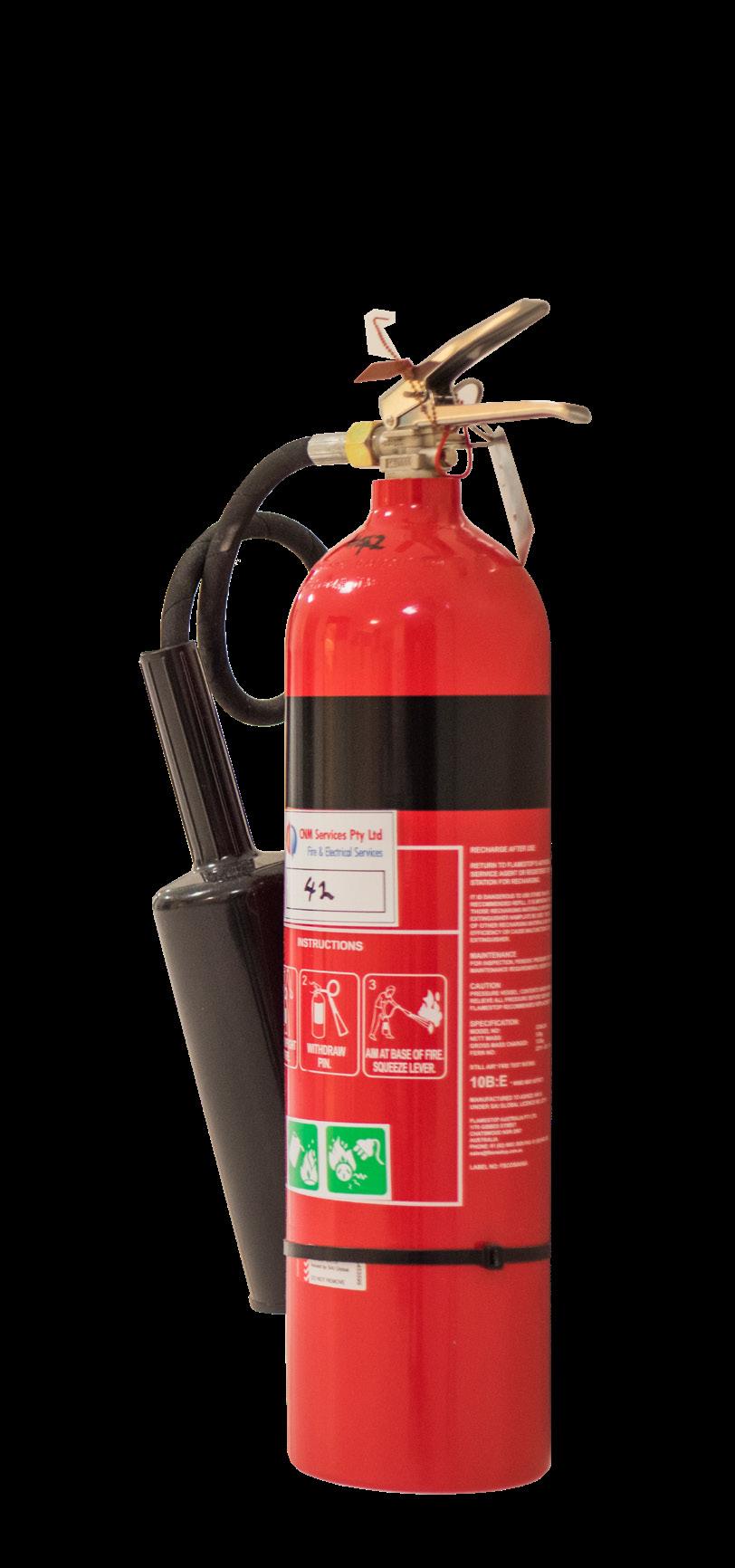
10 minute read
Fire Safety
from Health Business 22.6
by PSI Media
Sponsored by Fire Safety
Fire safety as a priority
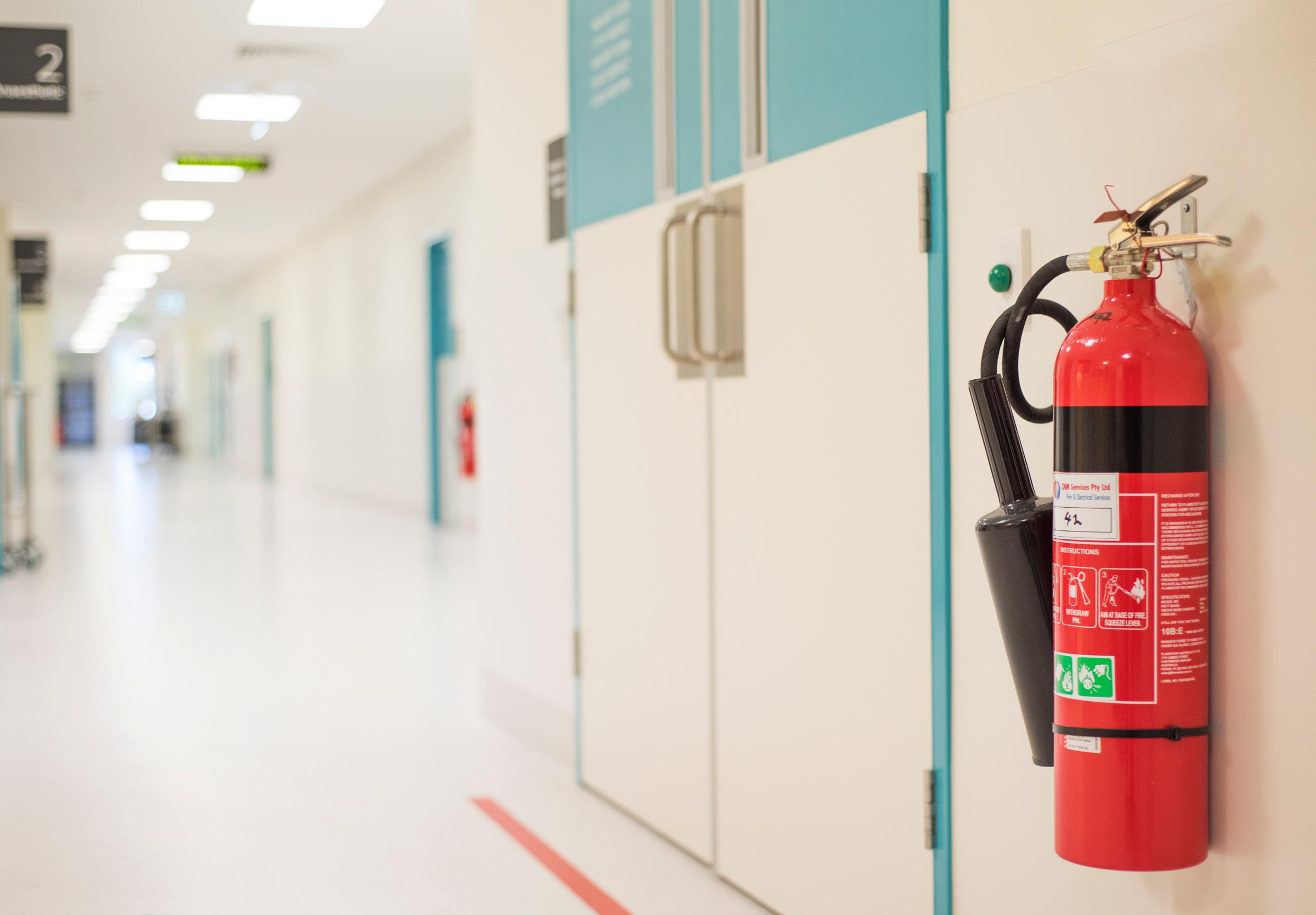
Will Lloyd, technical manager at the Fire Industry Association discusses the importance of fire safety in hospitals
Effective fire safety in any environment depends on a combination of physical fire precautions and a robust system of effective management. Fire safety in the healthcare environment is particularly challenging, since many healthcare building occupants will require some degree of assistance from trained staff to ensure their safety in the event of a fire evacuation.
Even in primary care environments, the proportion of building occupants that may require some assistance to quickly escape the effects of a fire is likely to be greater than that which would be expected from a cross-section of the general population.
While physical fire precautions within a building are intended to provide protection to building occupants, effective fire safety management ensures that the incidence of fire is minimised, the physical fire precautions are maintained in an operational state, the organisation is able to respond effectively should a fire occur, and that the impact of a fire incident is minimised.
Legislation The current legislation in the form of the Regulatory Reform (Fire Safety) Order 2005 (equivalent legislation applies in Scotland and Northern Ireland) requires a managed risk approach to fire safety. The process of fire risk assessment, mitigation and review requires a robust system of management capable of identifying hazards, qualifying their impact, devising appropriate mitigation, and continual monitoring.
The presence of a robust system of fire safety management is a key influence in fire risk assessment and in many healthcare environments it is the determining factor in evaluating the level of fire risk.
The increasing prevalence of building fire strategies for healthcare premises which contain fire-engineered design solutions, are likely to intensify the need for enhanced fire safety management.
These solutions may require enhanced fire safety management procedures to be applied holistically or simply as a specific component of a fireengineered solution. Risk mitigation In a healthcare environment with very high dependency patients, it is unlikely that any amount of physical fire precautions on their own can reduce fire risks Even in primary care environments, the proportion of building occupants that may require some assistance to quickly escape the effects of a fire is likely to be greater than that which would be expected from a crosssection of the general population to an acceptable level. Adequate risk mitigation can only be achieved with the provision of a sufficient number of suitably trained staff, an environment in which the fire precautions are well maintained, and effective emergency action plans that have been sufficiently E
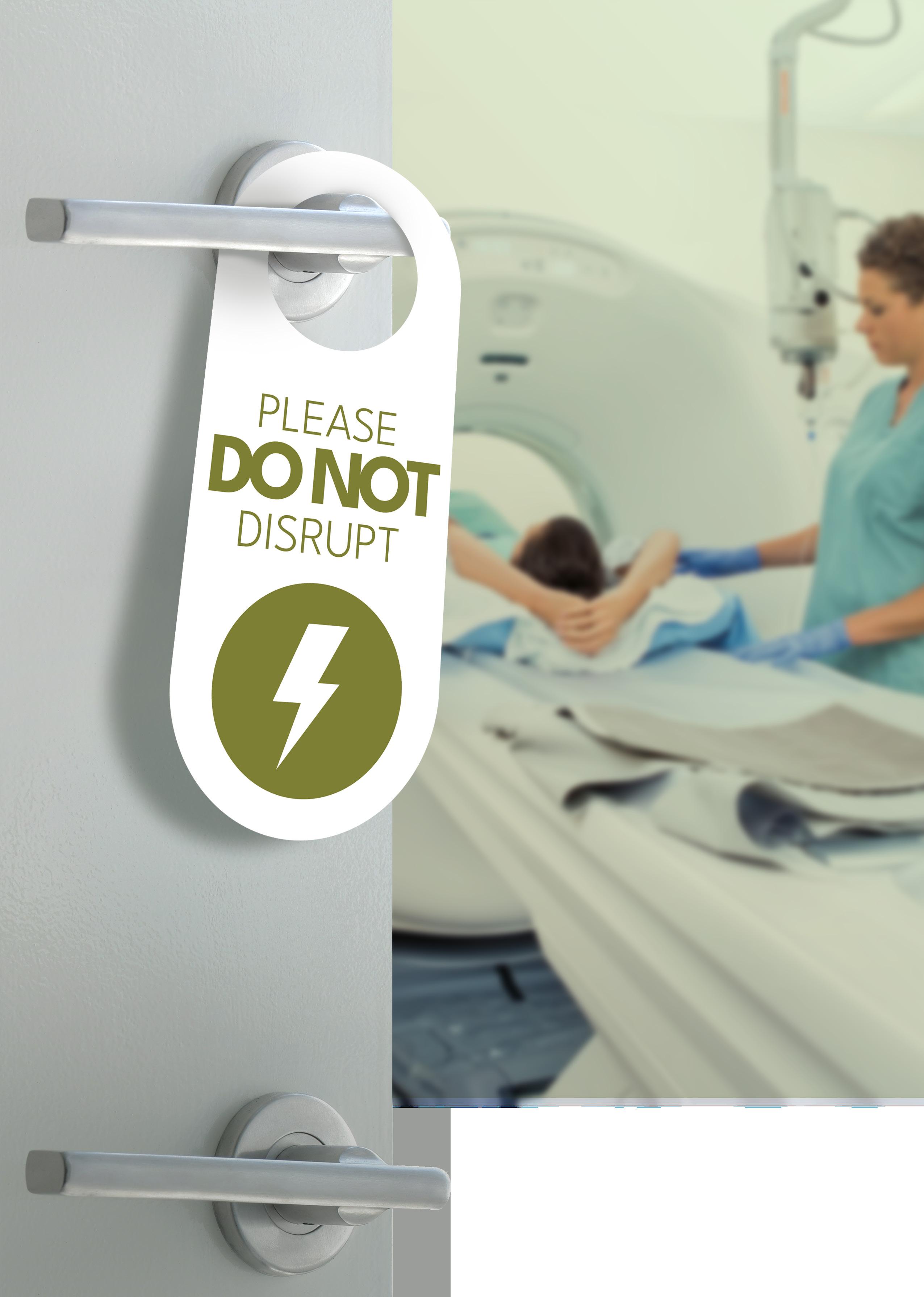
rehearsed. It is the non-physical elements of these fire precautions that are provided as a function of fire safety management.
False alarms Another way to significantly improve fire safety in hospitals and other healthcare facilities is to minimise the number of false alarms and unwanted fire alarm signals (UFAS). An UFAS is a false alarm from an automatic fire detection and fire alarm system that has been passed on to the fire and rescue service. For example, a typical cause of a false alarm in a hospital/care setting might be from the burning of toast (the NHS runs on toast). Instances of UFAS impact upon the treatment and care of patients and can result in the loss of appointments, disruption to care and treatment regimes, and can significantly affect staff morale. In addition to this, unwanted fire alarm signals have a serious impact on the fire and rescue service, diverting firefighters from other genuine emergencies and potentially life-saving activity.
In order to identify incidents of false alarms correctly, it is necessary to define the sources of fire detection and alarm system activations.
The causes of fire detection and alarm system activations can be broadly classed as one of two incident types: fire; or false alarm. These incidents can be defined as follows: Fire – a fire can be regarded as an incident resulting in the uncontrolled emission of heat and/or smoke or false alarm – activation of the fire detection and alarm system resulting from a cause other than fire.
In accordance with the National Fire Chiefs Council (NFCC) policy, a false alarm becomes an unwanted fire signal at the point the fireand-rescue service is requested to attend.
The false alarms may be subdivided into four categories as defined in BS 5839. Firstly, equipment false alarms, in which the false alarm has resulted from a fault in the system. The most serious of the categories as well as the one where fast action can bring significant
improvement to fire safety is an alarm caused by faulty equipment. Reducing false alarms begins when designing the equipment.
Article 18 of the Regulatory Reform (Fire Safety) Order 2005 (RRO) requires the Responsible Person to ‘appoint one or more competent persons to assist in undertaking the preventive and protective measures’. Where the protective measures include a fire alarm and fire detection system, a proper service and maintenance programme is essential to ensure the fire alarm and detection system works when it is needed most.
British Standards recommend that the number of service visits per annum should be a minimum of twice a year (with the actual number dictated by a suitable and sufficient risk assessment).
Secondly, unwanted alarms, in which a system has responded, either as designed or as the technology may reasonably be expected to respond, to any of the following: (i) a fire-like phenomenon or environmental influence (for example smoke from a nearby bonfire, dust or insects, processes that produce smoke or flame, or environmental effects that can render certain types of detector unstable, such as rapid airflow); (ii) accidental damage; (iii) inappropriate human action (for example operation of the system for test or maintenance purposes without prior warning to building occupants and/or an alarm receiving centre). This could also be malicious false alarms, in which a person operates a manual call point or causes a fire detector to initiate a fire signal, whilst knowing that there is no fire. There are also false alarms with good intent, in which a person operates a manual call point or otherwise initiates a fire signal in the belief that there is a fire, when no fire actually exists.
In order for an organisation to adequately address the issue, accurate records of all false alarms should be maintained. The healthcare organisation should set in place a mechanism to review the organisation’s false alarm performance, and arrangements to mitigate such incidents.
In tackling the issue of false alarms, it is important to involve the appropriate stakeholders. These may include fire safety manager fire safety advisor (where appointed), staff representative, fire detection and fire alarm system maintainer, fire detection and fire alarm system manufacturer; local fire service representative, estates manager, staff residences representative, planning department officer, and contractors (as appropriate).
This list is not exhaustive; other stakeholders may be required depending on the nature of false alarms experienced and their causes. For example, it may be necessary to include the local authority pest control officer if a number of false alarms are attributable to insect infestations. It is not expected that all stakeholders will attend every meeting, as the attendance at each meeting should be tailored to the main reported causes of false alarms in the organisation. L
FURTHER INFORMATION
www.fia.uk.com
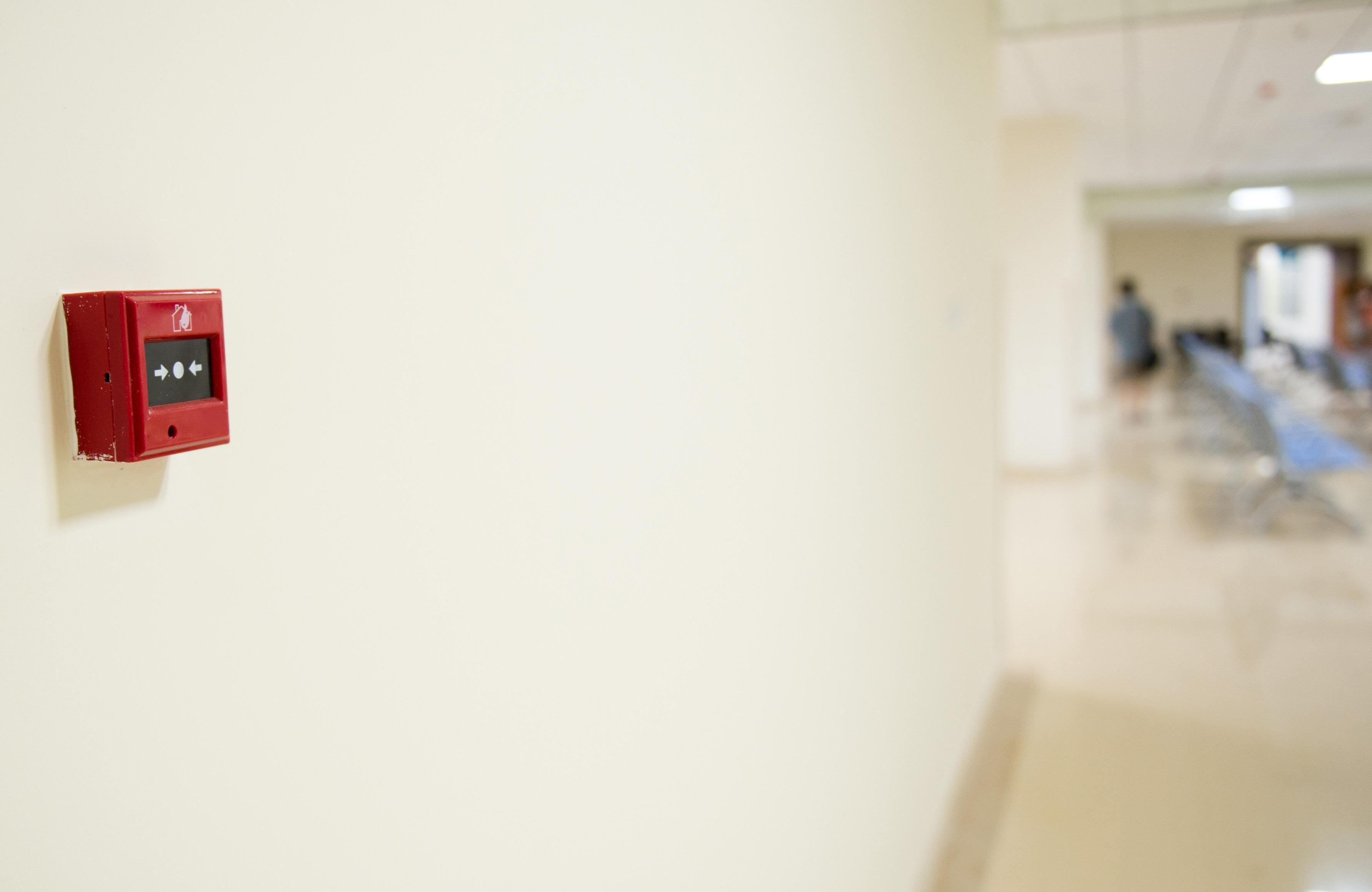
Advertisement Feature New ways of working
Philips monitors’ portfolio offers a wide range of features to help healthcare workers whilst also providing security
Innovating the healthcare sector It has been more than two years under the pandemic, and our lives have changed forever, especially in terms of how we work. Companies and institutions that recognised the benefits of flexible workplaces and WFH were quick to implement these new ways of working with great success in productivity and improved well-being for their workforce. Solutions such as video conferences rendered distances long or short irrelevant and removed communication barriers. The healthcare sector equally underwent those changes with, amongst others, the introduction of flexible workstations. Working on a laptop that hooks up to a monitor, keyboard, and mouse has increasingly become the new normal at doctor’s surgeries and hospitals.
This year, Philips monitors brought three new displays to market, which were conceptualised from the ground-up for flexible working. The new B1U models from the Philips monitors’ business portfolio combine high-resolution webcams, USB-C connectivity and a KVM switch to instantly create an individualised workspace by connecting a laptop with just a single cable.
Video calls with high-res video and audio In the extensive Philips monitors portfolio, the Philips 24B1U5301H, a 23.8” display with a colour-accurate IPS panel is the most compact variant of this new line-up. It features Full HD resolution and a 75 Hz refresh rate, with 105 per cent sRGB gamut coverage, making it proficient in displaying accurate colours and sharp text.
The 24B1U5301H comes with a noisecancelling microphone and a 5 MP webcam, which also supports Windows HelloTM. This enables medical staff to log in to a Windows PC by just looking at the camera, without entering a password, increasing security, and allowing the team to unlock their PC when their hands are full or contaminated. To ensure patients’ privacy, the webcam also has a shutter to physically block the camera view. Thanks to the clear sound of the microphone and the high resolution of the webcam, a more natural conversation is ensured via video call.
Furthermore, this monitor offers an integrated USB-C docking station, complete with a KVM switch. This means that a laptop, which is connected to the monitor’s USB-C port, can access the ports on the monitor (4x USB 3.2 and RJ-45). Users can choose to extend or mirror their notebook’s display to the monitor via USB DP-Alt Mode, all the while the laptop is being charged or powered (up to 90 W). Thanks to the DisplayPort output, a second display can be easily connected alongside the 24B1U5301H - extending the screen real estate whilst keeping the workstation clutter-free. A separate desktop system can also be attached at the same time as a second input source. Switching between the two devices is a doddle with the KVM switch on the monitor and without the need to make any further adjustments to the monitor, keyboard, and mouse setup.
In a real-world scenario, a doctor can bring their work laptop to the flexible work desk at their office/hospital and simply connect it to the monitor via USB-C. It will have a fast and secure access to the local network (thanks to the monitor’s RJ-45 port), as well as to the keyboard and mouse or a printer (connected to the monitor’s USB hub), creating an ergonomic, clean working desk in an instant.
For a sharper display and larger screen area, the Philips 27B1U5601H offers a step-up with the same webcam, but with a 27” display and QHD resolution (2560x1440).
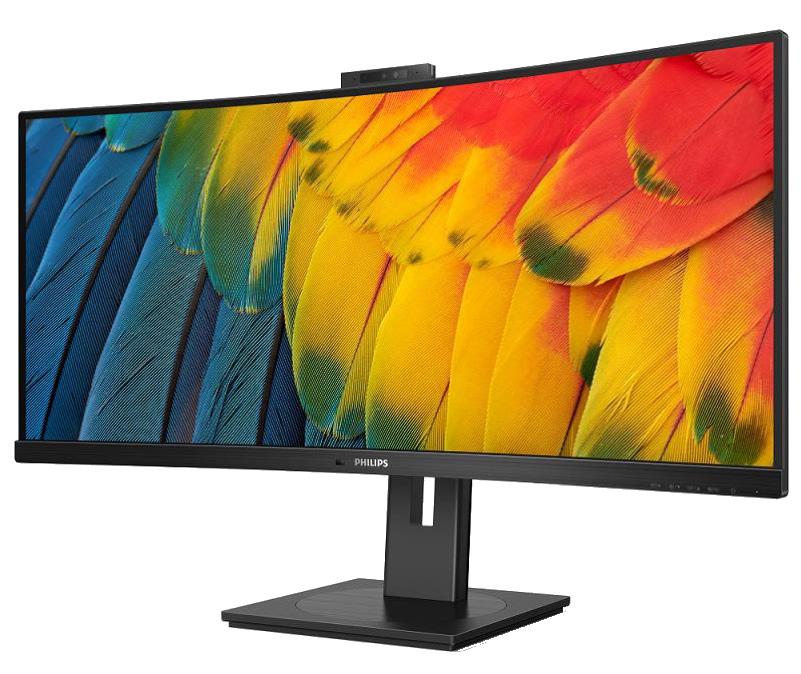
Widening your horizon Fit for administration purposes, the Philips 34B1U5600CH features a curved 34” display with 3440x1440 pixels, including the same full docking station as its smaller siblings: a USB-C docking station with 100W power delivery, 5 MP Windows Hello webcam with a noisecancelling microphone, and an RJ-45 input with Gigabit Ethernet support. Thanks to its 21:9 aspect ratio, it can easily replace dual-monitor setups. With a sleek, futuristic design, it perfectly matches the interior design of the reception area at doctors’ offices and hospitals.
Both the 27B1U5601H and 34B1U5600CH also support up to 100W power delivery via USB-C so they can operate and charge laptops and similar devices with higher electricity consumption. The large display makes working with long texts, wide spreadsheets and detailed images so much easier.
Sustainable working with sustainable products Finally, the three B1U models are shipped in 100 per cent recyclable packaging material and are certified with EnergyStar 8.0 and EPEAT. All models also meet the TÜV Rheinland Eye Comfort standard, as they offer an ideal viewing experience even when used for long hours thanks to FlickerFree and LowBlue light technologies. Due to the PowerSensor with infrared detection, the display can reduce brightness when the user is away, saving energy costs of up to 70 per cent.
For health institutions that need to take the next step in their IT infrastructure, Philips monitors offer the ideal technology for productivity. L
FURTHER INFORMATION










